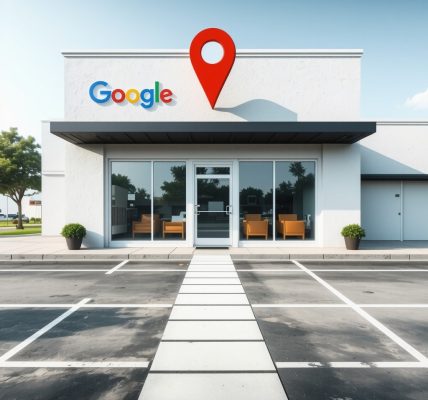Unlocking the Secrets of Local Search Optimization: Is Your Google My Business Description Holding You Back?
Picture this: you’re a small business owner with a fantastic service to offer, but your potential customers can’t find you on Google Maps or local searches. Frustrating, right? The culprit often lies in one overlooked detail—your Google My Business (GMB) description. It’s the digital handshake that can make or break your local visibility.
Why Your GMB Business Description Is More Than Just Words
Many entrepreneurs treat their GMB descriptions as a mere formality, but savvy local SEO experts know better. This is your chance to tell your story, include keywords naturally, and appeal to both algorithms and humans. Think of it as your business’s elevator pitch—short, compelling, and optimized for discovery.
Crafting a Description That Sings (and Ranks)
So, how do you optimize your GMB business description for local search? Here’s the scoop: sprinkle in local keywords, highlight unique selling propositions, and keep it authentic. But beware—keyword stuffing is a quick ticket to penalization. Balance is key.
Are You Missing Out on Local Keywords? The Hidden Power of Semantic SEO
Embedding Latent Semantic Indexing (LSI) keywords—related terms that Google associates with your main keywords—can dramatically boost your local rankings. For instance, if you run a bakery in Brooklyn, include phrases like “Brooklyn baked goods,” “artisan bread in Brooklyn,” and “local pastry shop.” These variations help Google understand your niche context better.
Google’s Rules of Engagement: What the Experts Say
According to Moz’s latest Local Search Ranking Factors, consistent and relevant NAP (Name, Address, Phone Number) citations paired with a well-crafted business description are crucial to climbing the local search ladder (Moz). It’s about creating a cohesive online presence that tells Google, “Hey, I’m the real deal in this neighborhood.”
Time to Take Action: Your Next Step in Local SEO Domination
Now, the question is—are you ready to revamp your GMB profile for maximum local impact? Dive into our comprehensive GMB SEO audit and discover what’s working and what’s not. Remember, a well-optimized description is just the beginning; combine it with reviews, citations, and engaging posts for best results.
If you’re eager to elevate your local search game, don’t hesitate to reach out today. Share your thoughts in the comments—what’s been your biggest challenge in optimizing your GMB profile?
Unlocking the Power of Your GMB Description: Are You Missing a Critical SEO Opportunity?
Imagine this: you’re optimizing your site, building backlinks, and managing reviews, yet your Google My Business (GMB) description remains unchanged—an oversight that could be limiting your local search rankings. A compelling, keyword-rich GMB description isn’t just a formality; it’s a strategic asset that can significantly enhance your local visibility when crafted with precision and purpose.
The Hidden Impact of a Well-Crafted GMB Description
Many local business owners underestimate the significance of their GMB description, viewing it as just a place to list basic information. However, seasoned SEO professionals recognize its potential to communicate your business’s unique value proposition while embedding essential local keywords. This dual approach not only signals relevance to Google but also entices potential customers with a clear, engaging narrative. As Moz emphasizes, consistent and relevant NAP data combined with optimized descriptions are vital for local search success (Moz).
How Can You Optimize Your GMB Description for Maximum Impact?
Start by incorporating local keywords naturally—think about phrases your customers might use when searching for your services. For example, if you operate a coffee shop in Chicago, include terms like “best coffee in Chicago,” “Chicago cafe,” or “local coffee roasters.” But don’t stop at keywords—highlight what makes your business unique. Do you serve organic, locally sourced beans? Do you offer a cozy ambiance or exceptional customer service? These details resonate with both search algorithms and human readers.
Balance is crucial; keyword stuffing can lead to penalties, so focus on creating a description that reads naturally and authentically. Also, consider semantic SEO techniques—embedding Latent Semantic Indexing (LSI) keywords—that relate to your main keywords and help Google understand your business context better (Search Engine Land).
Are You Leveraging Semantic SEO to Dominate the Local Search Results?
Embedding related terms and variations of your main keywords can differentiate your listing from competitors and improve your chances of ranking higher in local packs. For instance, a bakery in Brooklyn might include phrases like “artisan bread Brooklyn,” “Brooklyn baked goods,” and “local pastry shop.” This diversity signals to Google that your business is deeply embedded in the local culinary scene, boosting your chances of appearing in multiple relevant searches.
Integrating Your Description into a Broader Local SEO Strategy
While a well-optimized description is essential, it should be part of a comprehensive local SEO approach. Consistent NAP citations, positive reviews, and regular GMB posts all play vital roles. For example, updating your GMB with weekly posts about special offers or new menu items keeps your listing active and engaging, further reinforcing your relevance in local searches (Effective GMB Posting Techniques).

What Are the Practical Next Steps to Elevate Your Local Search Presence?
If you’re serious about dominating your local market, start by auditing your current GMB profile. Our comprehensive GMB SEO audit can identify areas for improvement, from description optimization to citation consistency. Remember, an optimized description is just one piece of the puzzle; combine it with review management, citation building, and engaging content for maximum effect.
Don’t let your competitors outshine you—share your insights or questions in the comments below, and let’s discuss how to turn your GMB profile into a local search powerhouse. For tailored assistance, feel free to reach out to our experts today!
Harnessing the Power of Semantic SEO for Local Visibility: Beyond Basic Optimization
While embedding local keywords in your GMB description is fundamental, an often-overlooked facet is the strategic use of semantic SEO techniques, which can exponentially enhance your local search footprint. Semantic SEO involves incorporating contextually related terms and natural language variations that mirror how your potential clients articulate their search queries. This approach not only broadens your visibility but also aligns your content more closely with Google’s evolving AI-driven understanding of search intent.
For instance, a boutique hotel in Austin aiming for top local rankings should go beyond generic descriptors like “best hotel in Austin.” Instead, incorporate related semantic keywords such as “luxury accommodations in Austin,” “Austin boutique lodging,” “family-friendly hotels in Austin,” and experiential phrases like “stay in the heart of Austin’s live music scene.” This creates a rich, contextual landscape that signals relevance to a diverse array of search queries, reducing dependence on exact keyword matches alone.
Google’s BERT algorithm update exemplifies this shift, emphasizing natural language processing and understanding of conversational queries (Google Developers). Consequently, your description should emulate human speech patterns, seamlessly integrating related terms to reflect real-world search behaviors. Moreover, employing structured data markup—like schema.org LocalBusiness—can further reinforce semantic signals, helping Google interpret and prioritize your listing more effectively.
How Can You Leverage Semantic Variations to Outrank Competitors?
Consider conducting a comprehensive keyword cluster analysis using tools like SEMrush or Ahrefs to identify high-potential semantic variations. Incorporate these organically into your description to create a multi-layered relevance profile. Additionally, maintain an authentic tone; overstuffing your description with keywords—regardless of semantic richness—can backfire and harm your rankings.
Regularly updating your description to mirror seasonal or trending semantic terms can also keep your profile aligned with current search patterns. For example, a landscaping service in Denver might include phrases like “winter snow removal Denver” during the colder months or “drought-resistant landscaping Denver” in summer.
Furthermore, Google’s focus on user intent suggests that your description should address potential customer questions proactively—such as service guarantees, special offers, or unique amenities—embedded within semantic contexts. This tactic fosters trust and improves click-through rates, which are strong ranking signals.
Integrating Semantic SEO into Your Broader Local Strategy
Semantic SEO should be part of an integrated local marketing plan that includes maintaining NAP consistency across citations, cultivating genuine reviews, and creating local content that complements your description. For example, publishing blog posts or news updates about local events or partnerships not only enriches your profile but also signals ongoing local engagement to Google.

Next-Level Tactics for Local Search Domination
To truly ascend the local search ladder, consider deploying AI-driven keyword insights and local intent analytics. Tools like BrightLocal’s Local Search Grid or LSI Graph can help identify latent semantic keywords that your competitors might overlook. Implementing these insights into your description and overall GMB strategy can set you apart in saturated markets.
Moreover, monitor your performance meticulously. Use Google Search Console and GMB insights to track how semantic keyword variations influence your rankings and click-through rates. Adjust your descriptions and related content based on these data points for continuous optimization.
If you’re committed to elevating your local SEO game, engaging with an expert who understands the nuances of semantic SEO and local search algorithms can make a tangible difference. Reach out to our team for tailored strategies that align with your unique business landscape and start transforming your GMB profile into a local search powerhouse today!
Are You Harnessing the Power of Long-Tail and Niche Semantic Keywords in Your GMB Description?
While embedding broad local keywords is essential, leveraging long-tail and niche-specific semantic keywords can carve out a unique space for your business in local search results. Experts suggest that integrating phrases like “organic gluten-free bakery in Brooklyn” or “pet-friendly coffee shop in Downtown Chicago” can attract highly targeted traffic. According to Moz’s recent research, semantic keyword diversification not only broadens your reach but also signals topical authority to Google (Moz). This nuanced approach can differentiate your listing from competitors, especially in saturated markets, by demonstrating expertise in specialized offerings.
How Can You Implement Schema Markup to Reinforce Your Description’s Semantic Signals?
Structured data markup, such as schema.org’s LocalBusiness schema, enhances the contextual understanding of your GMB description. Proper implementation can highlight specific attributes—like your business’s specialization, service areas, and unique features—making your listing more informative and attractive in search snippets. For instance, embedding schema for “Wheelchair Accessible” or “Wi-Fi Available” can influence user click-through rates positively. Search Engine Land emphasizes that schema markup is a critical component of semantic SEO, helping Google interpret your business’s relevance more accurately (Search Engine Land).
What Are the Best Practices for Crafting an Authentic and Persuasive GMB Description That Also Ranks?
Authenticity remains paramount. Your description should reflect genuine business attributes while naturally incorporating semantically related keywords. Avoid keyword stuffing by weaving related terms seamlessly into your narrative. For example, instead of repeating “best pizza in New York,” diversify with “award-winning thin-crust pies in Manhattan” or “family-friendly pizza joint near Central Park.” Regularly updating your description to include seasonal or trending semantic terms ensures ongoing relevance. Maintaining a conversational tone that addresses customer needs and questions fosters engagement and trust, ultimately boosting rankings (Understanding Local SEO).
How Does Voice Search and Natural Language Processing Influence Your Description Strategy?
The rise of voice search, driven by AI advancements like Google’s BERT and MUM algorithms, necessitates a shift toward natural language optimization. Your description should emulate how customers inquire conversationally, using questions and long-form phrases. For example, instead of “best plumber in Boston,” optimize for “Who’s the most reliable plumber near me in Boston?” Incorporate these variations organically, emphasizing user intent. A study from Google reveals that voice search queries are increasingly local and question-based, making semantic and conversational optimization crucial (Google Developers).
What Tools and Techniques Can Help You Continually Refine Your GMB Description for Maximum Impact?
Utilize advanced keyword research tools such as SEMrush, Ahrefs, or LSI Graph to identify semantic variations and long-tail keywords relevant to your niche. Regularly audit your GMB profile using comprehensive SEO tools like our GMB SEO audit to uncover gaps and opportunities. Additionally, monitor your performance metrics—click-through rates, keyword rankings, and user engagement—to inform iterative updates. Engaging with local content strategies, such as publishing blogs about local events or partnerships, reinforces semantic signals and demonstrates ongoing community involvement (Understanding Local SEO). This holistic approach ensures your description remains a dynamic asset in your local SEO arsenal.
Expert Insights & Advanced Considerations
Leverage Semantic SEO to Enhance Contextual Relevance
Integrating Latent Semantic Indexing (LSI) keywords and related terms within your GMB description creates a nuanced semantic landscape, helping Google understand your business’s niche and boosting your visibility across diverse search queries.
Implement Structured Data Markup for Enhanced Understanding
Using schema.org LocalBusiness markup not only reinforces your description’s relevance but also improves how your listing appears in search snippets, making it more attractive and informative for potential customers.
Optimize for Voice Search and Natural Language Queries
Craft your description to mirror conversational language and common customer questions, aligning with the rise of voice search and AI-driven search algorithms like BERT and MUM, thereby capturing more local traffic.
Maintain Consistent NAP and Review Signals
Ensure your Name, Address, Phone Number (NAP) and review profiles are aligned and optimized, creating a cohesive online presence that signals authority and relevance to Google’s local algorithms.
Regularly Update Content to Reflect Seasonal and Trending Terms
Keep your description fresh by incorporating seasonal keywords and current trends, demonstrating ongoing local engagement and relevance, which can positively influence your rankings.
Curated Expert Resources
- Google Developers Blog: Offers insights into how natural language processing impacts search, guiding optimization for conversational queries.
- Search Engine Land: Provides in-depth articles on schema markup and semantic SEO best practices, essential for technical optimization.
- Moz Local SEO Guide: A comprehensive resource on local SEO fundamentals, including citation and review management strategies.
- BrightLocal: Specializes in local search analytics and AI-driven keyword insights, valuable for ongoing optimization efforts.
- Google My Business Help Center: Official platform for updates, best practices, and technical guidance on managing your GMB profile effectively.
Final Expert Perspective
Mastering your Google My Business description with advanced semantic SEO, structured data, and conversational language is crucial for dominating local search results. This strategic approach not only enhances visibility but also builds trust with your audience, turning local searches into loyal customers. For those committed to elevating their local SEO game, collaborating with seasoned experts and leveraging cutting-edge tools can translate these insights into tangible growth. Dive deeper into your local SEO strategy today by exploring our GMB SEO audit and start transforming your profile into a local search powerhouse.



This article hits the mark on how crucial a well-optimized GMB description is for local SEO success. I’ve seen firsthand how adding contextually relevant local keywords and embracing semantic SEO techniques can dramatically improve visibility. During my last local campaign, incorporating niche-specific long-tail phrases like ‘eco-friendly plumber in Austin’ really helped us stand out in saturated markets.
One thing I wonder about is how other businesses are balancing keyword optimization with maintaining an authentic voice. In my experience, overly stuffed descriptions can seem unnatural and risk losing trust. Have others found effective ways to weave keywords seamlessly while keeping the tone genuine and customer-centric? It seems that updating descriptions periodically to match seasonal trends or local events might be a good tactic. What’s been your experience? Would love to hear insights from this community on how they keep their descriptions fresh and engaging.